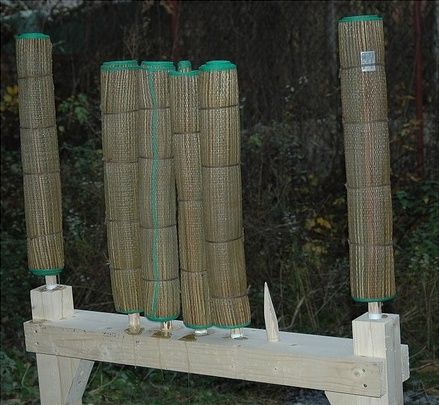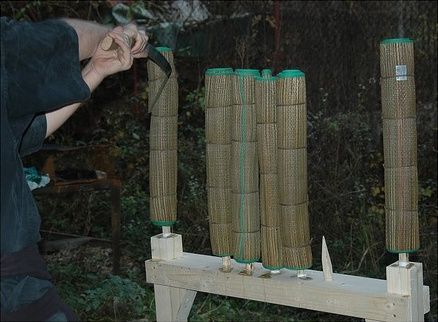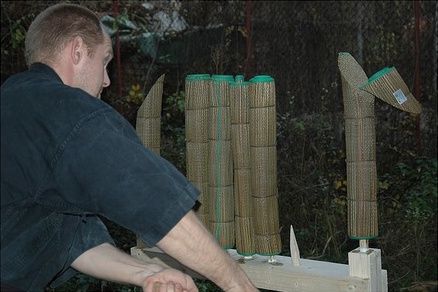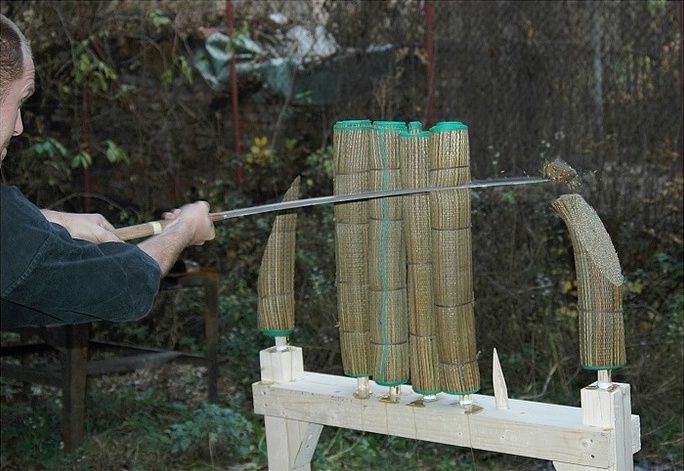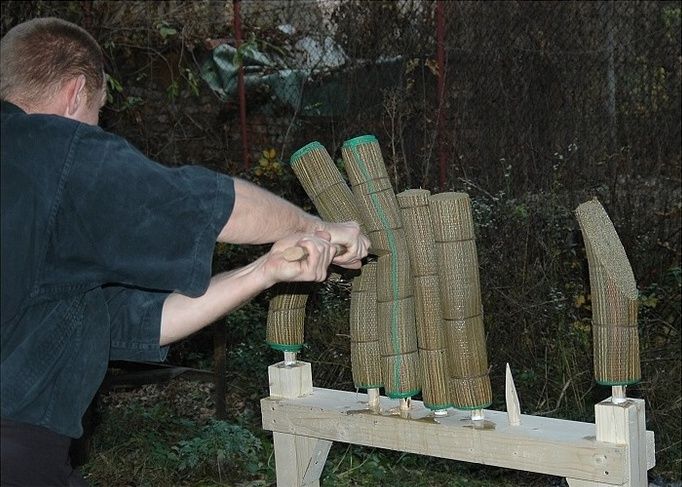Tameshigiri and other Japanese sword testing
Pavel Bolf
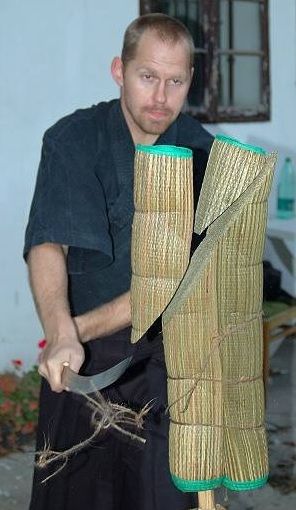
Tameshigiri is a good way to check the quality of the blade. However, it should be remembered that it also takes a skilled swordsman to make this examination.
Historically, there have even been specialists who have dedicated themselves to this field. The Japanese sword is a costly affair due to the complexity of its creation process. Neither its owner, nor in any case its maker, would be happy if "their" sword was damaged or completely destroyed during testing.
So before a novice swordsman sets about chopping all sorts of obstacles, he should certainly take the time to practise dry chopping, preferably by consulting an iaido, iaijutsu, etc. club about chopping technique.
It is possible to use a boken - a wooden sword - in practicing slashes (suburi), in this case it is good to try "chopping wood". Practicing oblique slashes conducted to different heights (head, side) on a wooden stake embedded in the ground, or on a dry tree. It leads to improvement of sword grip, accuracy and power of the chop.
To strengthen the muscles, especially the forearms, it is good to use a suburito (sword for suburi training). It is similar to the boken (bokuto), but much more powerful, often longer. The generous size of the suburito, however, makes it mainly heavier. In our conditions it is difficult to buy such a tool in a shop. The Chinese manufacturers producing most of the wooden weapons available on our market are obviously unaware of the purpose of the suburito and have only copied its shape in profile. However, they have forgotten about the bulkiness and mass of the material, which is why these suburitos are often lighter than bokens from the same manufacturers.
I use as a suburito a common 15x15 beam used for building trusses, shortened to 130 cm and modified only in the holding points - about 30 cm. The seemingly uncut "log" suits its purpose very well. The performance of the forearm muscles is 100% better after just one week of training with this tool.
However, a piece of beech or oak log cut to the appropriate dimensions with a roughly machined handle would be quite sufficient. It is also well suited for the aforementioned "wood chopping", or is easily replaced with a new piece of log after wear.
There is a large selection of bokuto (wooden sword) on the market. I prefer to use a Japanese-made boken of more massive dimensions for contact exercises, the only disadvantage of which is the price (approx. 1000 CZK), but in terms of safety of exercises (breaking during contact exercises with a partner) and also constantly buying new "cheap" bokens, this investment is worthwhile. Quality bokens are usually significantly heavier, which makes them more similar in weight to steel swords. If you own a steel sword, use a suburi (slashing "blank") sword for practice.
Choosing a sword
Today there is a large choice on the market, from pseudo swords on the market, to swords of large companies in different price ranges and qualities, to small manufacturers with piece production to Japanese sword makers. These are the best, but also the most expensive. The lower price limit is 200 000,- CZK. While the cheapest "usable" swords cost around 9,000 CZK. When choosing a sword, its future owner should be aware of what he expects from his weapon and for what purpose he will use it. The rule "price corresponds to quality" applies here more than anywhere else. Let's start with the construction of the blade. Most beginners want a sword that is light, sharp and very durable. However, this is somewhat contradictory. The blades used in wars had a very massive frame, especially the rounding of the surfaces forming the edge (hiranic). These surfaces are shaped like a lens. The more convex the edge, the more resistant it is to breaking teeth. However, it is not as sharp as a sword with a slight hiratic. It cuts like a razor, but is prone to breaking the edge. And, of course, the weight of the two variants is very different.
Quality of the blade
Regardless of the quality and price of the sword, it is important to remember that it is possible to break, break a tooth, bend a blade, or otherwise damage a blade with any sword. Chopping stone lamps (Zatoichi), iron pipes (Highlander), chopping with the blade against itself (most films), etc., would result in the destruction of the sword. These are just gimmicks and have nothing to do with reality. The blades are originally designed for chopping (cutting) meat, not for cutting down forests or chopping iron bars. Blades made with traditional technology are difficult to break (not impossible), rather they bend when cut inexpertly (can crack in the hamon area). Bent and otherwise undamaged blades can be straightened.
However, there is always a risk of breakage with honed steel blades. This is highest for blades hardened in full profile (clouding of the entire blade). Swords hardened to hamon (only the blade line is hardened) are much less prone to breakage. Here, however, it depends on each individual piece. The hamon hardening process is complex, and the subsequent tempering is also extremely important. So it is up to the manufacturer how good a blade they can produce. In the case of uncoated blades, the strength of the blade is a significant advantage. A thicker blade is able to withstand more load than a subtle blade.
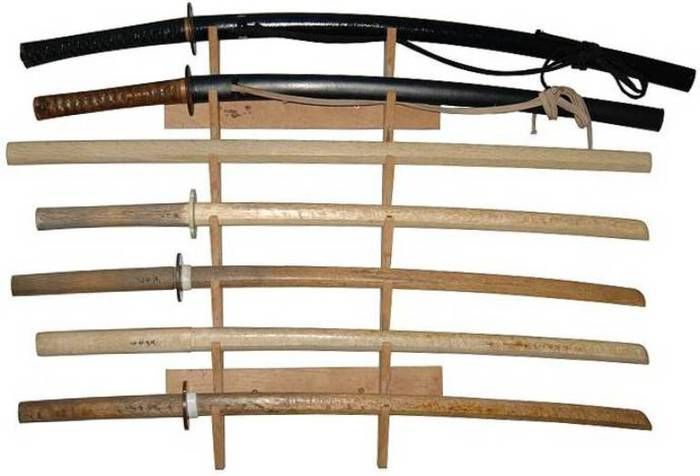
Blade sharpness
The sharper it is, the better it cuts. So the smaller the hiranic the sharper it is. But sword sharpness is, in my opinion, an unnecessarily overrated issue. More important is the technique itself. But a completely blunt sword is also not good (for tameshigiri).
Materials for tameshigiri
The list of what to use is short. The most suitable is soaked straw. And" already in the form of tied bundles, or beach chairs rolled into a roll, or tatami. They are similar in strength to the sensation of chopping a human body (I've read this) and do not damage the sword (its blade). If the straw is not soaked it can break small teeth in blades with minimal hiranic and a hard hamon. It is also possible to chop paper tubes, but here, due to the considerable resistance of the material and the high difficulty, compared to straw, the blade can already bend or break. It is also possible to use bamboo, but in 'fresh' green form. Dried bamboo is too hard. Any other materials, wood, iron, plastic bottles filled with water, etc. are not suitable. Chopping fruits and vegetables is not ideal either. A machete will do. And they contain aggressive substances that damage the blade surface. The blade should be cleaned thoroughly after each use. When chopping soaked straw, do not slide the wet blade into the sheath, you will no longer get moisture from the inside of the saya and the blade will rust.
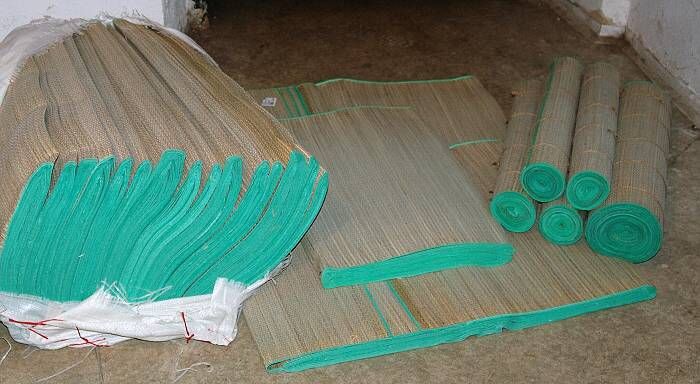
And finally
When practicing with a sharp sword, whether tameshigiri or iaido, keep in mind the safety of yourself and those around you. No one should be standing in the direction you are chopping tameshigiri. If the blade breaks, it could be fatal. Those who have practiced for many years with iaito should reflect on bad habits. When switching to a sharp sword one should slow down considerably, especially from the draw and noto (inserting the sword into the saya) The various jokes with the blade pointed at one's friends are really out of place. If someone causes injury to themselves, it's not the sword's fault, it's theirs. The argument that practicing with a sharp sword is dangerous is baseless.
Translated with www.DeepL.com
